Dear Artist,
In 1880, when Hilma af Klint was 18, she watched her 10-year-old sister Hermina die of the flu. Their father was a Swedish naval commander, and her family had spent the summers exploring the rocky hills of the island of Adelsö on Lake Mälaren, just west of Stockholm. There, Hilma nurtured her interests in botany, mathematics, Darwinism, physics and music. The loss of her sister also opened the door to inquiring into the spirit world.
Hilma studied art at the Academy of Fine Arts in Stockholm, supporting herself with landscape and portrait work and illustrating a volume of medical diagrams for a veterinarian. Because her grandfather had been a nautical cartographer, Hilma drifted fluidly between the nuances of academic painting and illustration, technical drawing and diagrams. Spiritually, she dove into the philosophical societies and mysticism that were growing in popularity among some artists and thinkers of the late 19th century, including the Theosophy of Madame Blavasky and Rudolph Steiner’s Anthroposophical Society.
In 1896, Hilma and four other artists began meeting regularly to hold séances and practice automatic drawing. They called their group “The Five,” and Hilma began taking detailed notes and cataloguing a geometric colour-coded visual language that might make visible the components of the astral plane. Eventually, “The Five” summoned what they believed were a collection of spirit guides they named “The High Masters,” who called for the artists to make paintings that could go into a temple. When the others declined, in 1906 Hilma quietly went to her studio to begin.
In 1908, at age 46, Hilma made 111 paintings, many of them gouache on paper, the ten largest hovering at 10 x 8-feet. Believing that she’d channelled the work without much intellectual interference or planning, she invited Rudolph Steiner, who was lecturing in Stockholm that year, to come to her studio to interpret. The paintings were unable to be defined, unrecognizable and uncategorized. Steiner, wary of Hilma’s reluctance to take responsibility for the creation of them, suggested she not show them but, instead, keep them hidden for 50 years. Hilma stopped working and began caring for her mother, who was going blind. After four years, she picked up her brush again, and by 1915 had completed 193 “Paintings For A Temple.”
Sincerely,
Sara
PS: “The pictures were painted directly through me, without any preliminary drawings, and with great force. I had no idea what the paintings were supposed to depict; nevertheless I worked swiftly and surely, without changing a single brush stroke.” (Hilma af Klint)
Esoterica: When she died in 1944 at the age of 81, Hilma, who never married or had children, bequeathed 1,200 paintings, 100 texts and 26,000 pages of notes to her nephew Eric, an Admiral of the naval fleet. Eric, less intimately familiar with the astral plane, still lovingly rolled up the contents of Hilma’s studio and put them in his un-insulated attic. Having stipulated in her Will that nothing be shown for twenty years, Hilma’s work was finally presented to the public in the mid-1980s, startling art scholars when they realized that her mystical colour-theory abstractions from 1907 onward pre-dated Wassily Kandinsky, Kasimir Malevich and Piet Mondrian. These artists, up until that moment, had been universally accepted as the fathers of modern abstraction.
“Every work of art is the child of its time, while often it is the parent of our emotions.” (Wassily Kandinsky)
 Hilma af Klint: Paintings for the Future is on view at the Solomon R. Guggenheim Museum in New York City until April 23, 2019.
Hilma af Klint: Paintings for the Future is on view at the Solomon R. Guggenheim Museum in New York City until April 23, 2019.
The Letters: Vol. 1 and 2, narrated by Dave Genn, are available for download on Amazon, here. Proceeds of sales contribute to the production of The Painter’s Keys.
“Life is a farce if a person does not serve truth.” (Hilma af Klint)
Featured Workshop
Six days in the Near North of Ontario Canada. Killarney and the La Cloche Mountains were a favourite location the Group of Seven visited to paint. Rugged, with granite cliffs thrusting hundreds of feet out of the water. Northern forest, islands, bald rocks and only accessible by boat. We travel to most locations on a sturdy pontoon boat. Whether it’s setting up on a rock face, a low lying island, or sitting at the base of a waterfall, every view is worth capturing. You stay in rustic cabins, each with its own cooking facilities. There is a large room we can paint in if the weather turns against us. Your instructor is Keith Thirgood who has been teaching adults to paint for 12 years. He will show you a step by step approach to painting en plein air, which makes capturing a scene easier than you might have thought possible. He’ll also teach Modern Colour Theory with a limited palette, which makes colour mixing easy.
For more information, visit www.wilsonstreetstudios.com.
Featured Artist
I’m a contemporary painter who loves to travel the world over finding pictures to paint, and capture on photo…check out my website and travel with me on my blog “The Traveling Artist Blog.” http://www.meljosieart.com




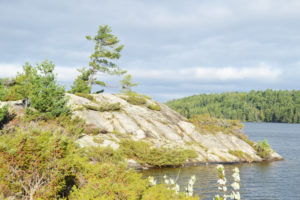
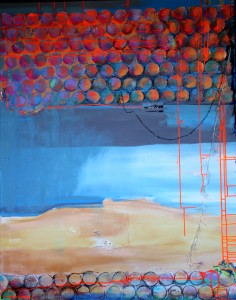
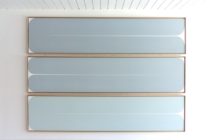
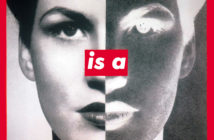
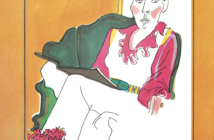
17 Comments
HILMA IN RAPTURE….
A pinnacle of process….
The true goal of ART!
makes you want to believe in Emmerson’s “oversoul” or Jung’s idea of the collective mind…or even “art’s progress” or……an outcome of a certain kind of art education in the West…?
Reminds me of what she tries to convey in this clip
https://m.youtube.com/watch?v=iGf2loLAwVE
WOW!
Far out!!!
Hugely and strangely interesting.
Trying to explain her experience with LSD the woman subjects says “I wish I could speak in technicolor”! What a great quote. Thanks for sharing this video.
Ha, great story. I’m picturing someone telling me to keep my art hidden for 50 years…. :(
I’m glad Klint is finally being recognized for her innovative and powerful work. How ironic that a man told her to hide her work. I recognize that he was taking her own uncertainty into account, but I wish she could have known her legacy. And I hope the art world firmly establishes her the true innovator of abstraction. I haven’t heard of her before, so I’m glad you are doing the work of getting her name and story out there.
Yes, I agree. She was a remarkable abstractionist who came to her ideas developing theories much the way Kandinsky did. He speculated on colors and shapes representing music, taste, sound etc not as far out as hers but maybe because she was talking to her sister’s spirit and as a child on her own felt the answers were coming into her head from her sister. Simply a very imaginative child and woman. Her work is gorgeous, singular to its time and remains fresh and immediately accessible to interpretation. Joy!
What a wonderful story! I would love to see them all! What a amazing painting vision she experienced.
I sort of get that feeling of freedom and non-judgement for my art when I use my ‘other’ hand.. Thank you for sharing this unique soul’s journey. She (and you, Sara) remind me to Think Cosmically, Act Globally! (-:
Maybe I don’t get out much, but this is insane. And I don’t mean insane like the word we use so often. I mean this is INSANE! I’m shaking right now.
Astonishing imagination in these works of Klint’s. And, so ahead of her time painting abstracts. I am infatuated in the fact that she stated: “The pictures were painted directly through me, without any preliminary drawings, and with great force. I had no idea what the paintings were supposed to depict; nevertheless I worked swiftly and surely, without changing a single brush stroke.” (Hilma af Klint) Thank you, Sara, for writing this article and bringing to light an artist unknown to me until now. With much appreciation for your research……Suszanne
It’s remarkable how contemporary these works are. I am thinking here of some of the bubbley Japanese stuff with all the circles and flowers. These are amazing. It’s terrific that they parallel our art developement without having been known. You can see “influences” in them from people she could not have known. And you can see who she influenced. (huh?) Thank you for publishing these. I am astonished.
I really enjoyed hearing the story of Hilma af Klint. I had never heard of her before and wonder how someone so original and an artist so realized could be kept a secret. But then that is what she wanted it seems. I can recognize the spiritual quality of her color and shapes. I’ve seen that same orange used in a Tibetan Buddhist thangka and in Van Gogh and recognized it was more than a color but a living entity of….something, not sure what but it has a depth and meaning. Maybe what these artists all have in common is they were not striving to create aesthetically pleasing and gallery-ready art works but instead were on a mission to create a bridge between this world and one unseen.
I saw a major exhibition of her work in the Moder Museum in Stockholm in 1988 . The catalogue contains a quite long and intersting text . The 10 great paintings are huge 328 x 240 cm . About her personality it is written …….. Hilma af Klimt lived simply and ascetically . She was regarded as being a bit odd and had almoust no social life . In particular she never met any men . She was always dressed in black , was thin and straight as a ramrod . Her dark hair was tied up in a bun. Children were not afraid of her and thought her kind and cheerfull . ….During her final years she frantically tried to find a place for het paintings , but was everywhere met with incomprehension or inability to cope with what she considered to be a gift to humanity . In her will she she gave everything to her nephew Eric with the request that it would be made public no sooner than 20 years after her death . He tried to get a public institution to take over everything but was also met with incomprehension . Only a few years before this exhibitio in 1988 there were request received to show the artists work .
Terrific article Sara!
Just this week I was dealing with the issue of “galleries look for consistency.” While my work has a common thread where some seems to be done by the same person, other pieces maybe not so much. In fact, to me, part of the “game” is exploration! While at the same time maintaining the basic principles of design….ie., form, value, composition, color theory, texture, hard/soft edges…etc. (all that your dad was so great at teaching!)
So, with this article it gives me hope and confidence to continue….relishing the creative journey with joy…and a desire to share my work with others who love it and find it interesting and fascinating.
Thank you
WOW! My comments mirror all the others- what an exceptional story, thank you so much. Amazing…. (I too am an, “it speaks through me” type of artist/creator )
Wow. I LOVE her work!